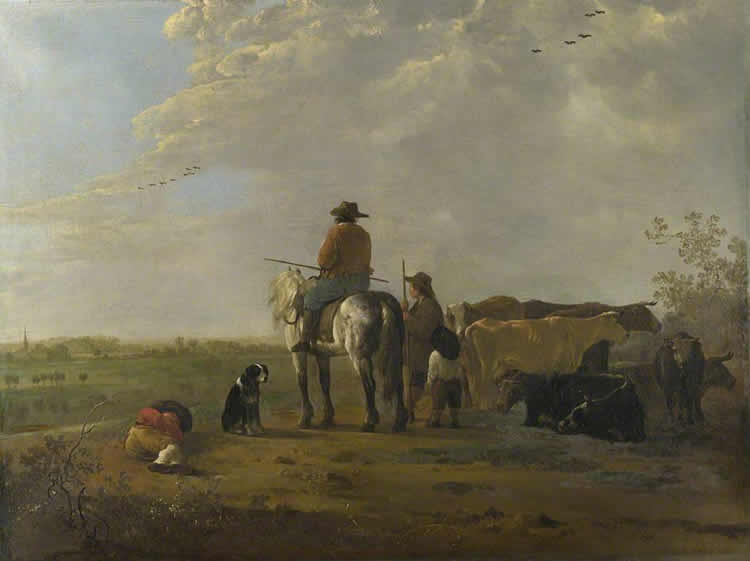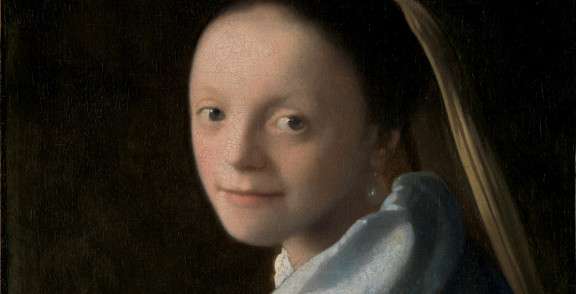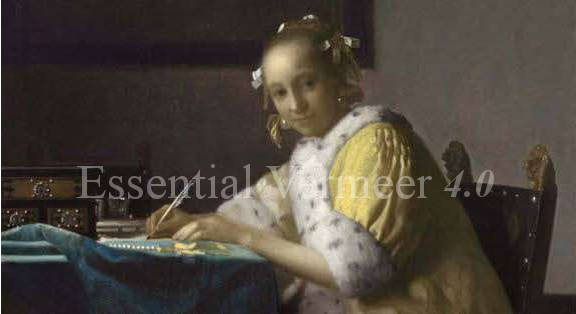A Horseman with a Cowherd and Two Boys in a Meadow, and Seven Cows
Aelbert Cuypc. 1655–1660
Oil on canvas, 80 x 106 cm.
The National Gallery, London

Aelbert CUYP
Dordrecht 1620-Dordrecht 1691
In the last 50 years, Cuyp has occupied an invidious position in the context of Dutch seventeenth-century painting because his very virtues have led him to be over-esteemed. He occupies a minor position in the development of painting in the seventeenth, century as he worked all his life in the relative isolation of his native Dordrecht. His earliest pictures are delightful essays in the manner of van Goyen, the major difference being that Cuyp preferred a slightly more cheerful palette and paid greater attention to detail. It is not quite clear what caused Cuyp to change his style so radically from his early manner, but it has been assumed to have been the influence of the newly fashionable Italian-style landscapes painted in Utrecht in the 1640s following the return of Jan Both from Italy. Cuyp, however, did not slavishly imitate; he soon evolved his own very special style. This frequently included the much-abused cows which he used as compositional props to frame his perfectly balanced distances, which are so often punctuated by the unfinished Gothic tower of the Grote Kerk at Dordrecht.
Cuyp responded to nature more than his detractors are prepared to admit, and a proportion of his pictures, contain no cows at all. The artist's interest in the depiction of atmosphere went a long way beyond a limp imitation, of Italian-type light-which of course he had never seen. This is best revealed in his seascapes. They usually depict rather square-looking boats becalmed. They have none of the elegance of those of Jan van de Cappelle, but they are made appealing by the fall of light. The result is a special feeling of calm which permeates almost all Cuyp's pictures; only occasionally is the calm disturbed by a hunter about to shoot a bird.
As is so often found with painters who did not pursue an official career of academic success and royal or state patronage, details about the artist's life are scant indeed. He was the son of the Dordrecht portrait painter Jacob Gerritsz. Cuyp (1594–1652), and indeed a few portraits have been attributed to Aelbert himself. His life was probably uneventful and the most adventurous thing he ever did was to paint a few ducks and hens.
Cuyp could well be described as the archetypal provincial painter. He did not make the move to Amsterdam, and the only evidence that he left Dordrecht at all is the fact that his pictures sometimes take other places as their subject, for instance Nijmegen. It is sad that this humble and inscrutable man should have enjoyed such adulation in the eighteenth and nineteenth centuries and should have had such criticism heaped upon him in the twentieth.
- Willem van Aelst (2)
- Balthasar van der Ast (6)
- Hendrick Avercamp (3)
- Dirck van Baburen (7)
- Jacob Adriaenz. Backer (3)
- David Bailly
- Ludolf Bakhuysen
- Bartholomeus van Bassen
- Cornelis Bega
- Gerrit Berckheyde (2)
- Gillis Gillisz de Bergh
- Jan van Bijlert (7)
- Jan de Bisschop (2)
- Abraham Bloemaert (4)
- Pieter De Bloot
- Ferdinand Bol (3)
- Hans Bollinger
- Paulus Bor (2)
- Ambrosio Bosschaert (7)
- Jan Both
- Leonaert Bramer (4)
- Salomon de Bray (2)
- Quiringh van Brekelenkam (4)
- Jan Gerritszoon van Bronchorst (2)
- Adriaen Brouwer (5)
- Hendrick ter Brugghen (6)
- Hendrick van der Burch (5)
- Willem Buytewech (6)
- Abraham van Calraet (2)
- Jacob van Campen
- Jan van de Cappelle(3)
- Pieter Claesz (4)
- Pieter Codde (6)
- Adriaen Coorte (9)
- Josse van Craesbeeck (2)
- Aelbert Cuyp (6)
- Philip van Dijk
- Gerrit Dou (10)
- Willem Drost (2)
- Hendrick Dubbels
- Jacob Duck (4)
- Karel Dujardin (3)
- Willem Duyster (5)
- Gerbrand van den Eeckhout
- Pieter Jansens Elinga
- Cesar van Everdingen (5)
- Allaert van Everdingen
- Carel Fabritius (5)
- Goveart Flinck
- Frans Francken the Younger
- Aert de Gelder
- Cornelis Gijsbrechts
- Jan van Goyen (6)
- Frans Hals (3)
- Dirck Hals (5)
- Jan Davidsz. Heem (6)
- Maerten van Heemskerck
- Bartholomeus van der Helst (4)
- Jan van der Heyden (8)
- Meyndert Hobbema (3)
- Gerard van Honthorst (8)
- Pieter de Hooch (12)
- Van Hoogstraten (9)
- Gerard Houckgeest (4)
- Jan van Huysum (3)
- Willem Kalf (4)
- Jan van Kessel
- Philip Koninck (2)
- Gérard de Lairesse (5)
- Pieter Lastman
- Judith Jansdochter Leyster (5)
- Jan Lievens (4)
- Jacob van Loo (7)
- Nicolaes Maes (9)
- Cornelis de Man (5)
- Gabriel Metsu (12)
- Michiel Janz. van Mierevelt (3)
- Frans van Mieris (8)
- Jan Miense Molenaer (5)
- Pieter Molijn (2)
- Paulus Moreelse (2)
- Pieter Mulier
- Michiel van Musscher (5)
- Aert van der Neer (3)
- Eglon van der Neer (3)
- Caspar Netscher (5)
- Jacob Ochervelt (8)
- Jacob van Oost (2)
- Adriaen van Ostade (5)
- Antonie Palamedesz (6)
- Adam Pijnacker (5)
- Egbert van der Poel (2)
- Jan Porcellis (4)
- Pieter Symonz. Potter
- Paulus Potter (7)
- Pieter Jansz. Quast (2)
- Rembrandt van Rijn (complete oeuvre)
- Jacob van Ruisdael (8)
- Solomon van Ruisdael (7)
- Rachel Ruysch (2)
- Pieter Saenredam (3)
- Godfried Schalcken (6)
- Hercules Segers (2)
- Hendrick Sorg (4)
- Jan Steen (8)
- Harmen Steenwyck (3)
- Matthias Stom (2)
- Michael Sweerts (6)
- David Teniers the Younger
- Gerrit ter Borch (15)
- Willem van de Velde (7)
- Jacob van Velsen
- Johannes Verkolje (2)
- Jan Cornelisz Verspronck (4)
- Abraham de Verwer
- Simon de Vlieger
- Hendrick van Vliet (2)
- Daniel Vosmaer (4)
- Jacobus Vrel (8)
- Jacob van Walscapelle (2)
- Jan Baptist Weenix (2)
- Jan Wijnants (3)
- Emanuel de Witte (6)
- Philips Wouwermans (2)




 or anything else that isn't working as it should be, I'd love to hear it! Please write me at:
or anything else that isn't working as it should be, I'd love to hear it! Please write me at: